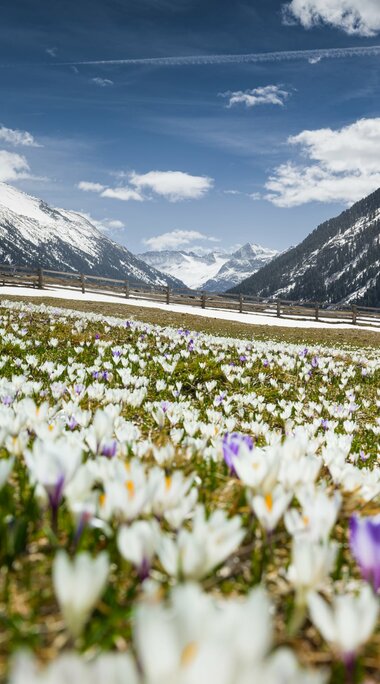Flora of the Hohen Tauern
With about 3,500 different plant species (including lichens and algae), more than one third of all plants recorded in Austria are found in the Hohe Tauern National Park.
The preservation of this diversity is due, among other things, to the protective regulations of the National Park, which offers them an undisturbed environment. Furthermore, the plants are considered the food basis for many insects and thus also enable their survival in the high mountains.
Edelweiss

The edelweiss is probably the best-known Alpine flower and serves as an emblem for numerous mountaineering associations such as the Alpine Club. Due to this popularity, picking and digging resulted in the destruction of many occurrences. Today the edelweiss is protected.
The edelweiss can be recognised by its characteristic white-felty hairiness, which serves as protection against dehydration and excessive UV radiation. The edelweiss grows mainly on stony, lime-rich grasslands, on rocks, in fine-grained crevices and mountain meadows between 1,800 and 3,500 metres.
Wolf lichen
The yellow-green lichen grows mainly on old larches, but also on stone pines and wooden roofs. In former times, a powder made from the wolf lichen was used to poison foxes and wolves. The biocoenosis consisting of a fungus and an alga is very resistant and thus counts as a pioneer plant. The wolf lichen absorbs the nutrients it needs to live from rainwater.
White cottongrass

The dense, woolly-white, spherical, 2 to 3 centimetre large spikelets are the distinctive feature of the white cottongrass.
White cottongrass grows on acid wet soil and can thus be found only near small lakes, small bodies of water and low-moor bogs. With its long runners it contributes to the silting up of bodies of water. The protected flower blooms in summer from June to July.
Swiss pine

The Swiss pine is one of the most beautiful and at the same time rarest trees in the Alps. The size of this tree is between 12 and 25 metres and, often together with the larch, forms the timberline. The needles of the Swiss stone pine are five to eight centimetres long and five of the needles are on a short shoot, these can withstand minus temperatures of up to 30 degrees Celsius. The cones, which grow upright on the tree, reach a size of six to eight centimetres. To thrive, the Swiss stone pine needs acidic raw humus soil, which is also the reason why it is mainly found in the Central Alps and the Carpathians. A special feature of these rare beauties is that they can live up to 1000 years and only flower in June and July at intervals of six to ten years.


